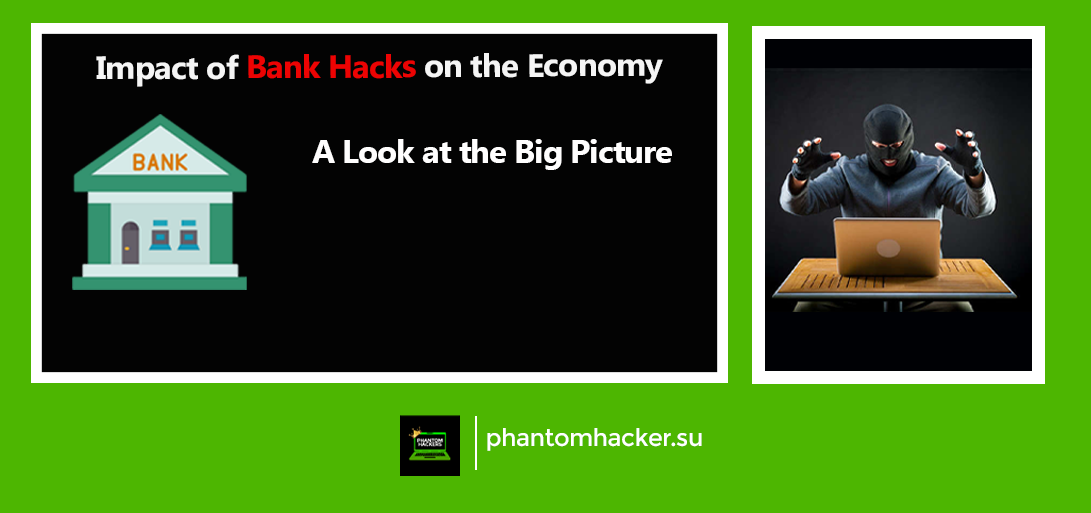In today’s digital age, the world is heavily reliant on technology, and the banking sector is no exception. As the banking industry transitions to a more digitized system, the frequency and severity of bank hacks have significantly increased. These cyber-attacks have a substantial impact on the economy, and it is essential to understand their effects.
What is a Bank Hack?
A bank hack refers to the unauthorized access of a financial institution’s computer network or website by cybercriminals. These hackers can steal sensitive customer data such as passwords, credit card details, and other personal information. They can also transfer money out of accounts, creating financial losses for both the bank and its customers.
The Economic Impact of Bank Hacks
The impact of bank hacks can be felt at both micro and macro levels. The immediate effects of a bank hack include direct costs and indirect costs.
Direct Costs of Bank Hacks
The direct costs of bank hacks include expenses related to data recovery, system restoration, customer compensation, and legal fees. Financial institutions have to bear the cost of investigating the breach, notifying affected customers, and providing them with identity theft protection services. These costs can quickly add up to millions of dollars.
Indirect Costs of Bank Hacks
The indirect costs of bank hacks are equally significant. These costs include reputational damage, loss of customers, and a decline in investor confidence. A single hack can cause significant harm to the reputation of a financial institution, leading to a loss of customers and trust. Investors may also withdraw their investments, leading to a decline in stock prices and market capitalization.
Mitigating the Impact of Bank Hacks
There are several steps that financial institutions can take to mitigate the impact of bank hacks. These steps include regular security assessments, network monitoring, and employee training programs. Banks must invest in robust cybersecurity infrastructure and regularly update their systems to prevent vulnerabilities that can be exploited by cybercriminals.
The Future of Bank Security
As cyber threats continue to evolve, financial institutions must remain vigilant and adapt to new threats continually. The banking industry must continue to invest in advanced security technologies, such as biometric authentication, machine learning, and artificial intelligence. These technologies can help banks detect and prevent cyber-attacks before they happen.
GET UNLIMITED MONEY TRANSFERS TO YOUR BANK ACCOUNT, PAYPAL, CASHAPP, WESTERN UNION
MONEY TRANSFER HACKER SERVICES
Frequently Asked Questions (FAQs)
Q. What is the most common type of bank hack? A. The most common type of bank hack is phishing. Phishing attacks involve tricking individuals into revealing their login credentials or other sensitive information through fraudulent emails, texts, or phone calls.
Q. Can bank hacks lead to a financial crisis? A. Yes, bank hacks can lead to a financial crisis, especially if multiple financial institutions are targeted simultaneously. The loss of customer trust and investor confidence can cause a significant decline in the financial sector.
Q. How long does it take for a financial institution to recover from a bank hack? A. The recovery time varies depending on the severity of the hack. Small-scale breaches can be resolved within a few days, while larger-scale breaches can take several months to recover from fully.
Conclusion
In conclusion, bank hacks pose a significant threat to the financial industry and the economy as a whole. The direct and indirect costs associated with a bank hack can be staggering, and financial institutions must take proactive measures to prevent them. Regular security assessments, network monitoring, employee training programs, and investments in advanced security technologies can all help mitigate the impact of bank hacks. As cyber threats continue to evolve, the banking industry must remain vigilant and adapt to new challenges to protect their customers and maintain their reputation in the market.
Related Sources
- “Bank Hacking: Understanding and Mitigating the Risks” by Kevin L. Day and Char Sample
- “Cybersecurity Risks in Financial Services” by the World Economic Forum
- “The Economic Impact of Cybercrime” by McAfee and CSIS
- “The 2019 Cybersecurity Almanac: 100 Facts, Figures, Predictions & Statistics” by Cybersecurity Ventures






